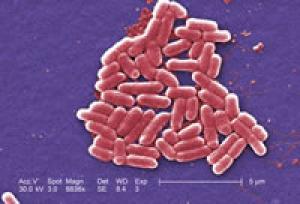A team of UCSF researchers has engineered E. coli with the key molecular circuitry that will enable genetic engineers to program cells to communicate and perform computations.
The work builds into cells the same logic gates found in electronic computers and creates a method to create circuits by “rewiring” communications between cells. This system can be harnessed to turn cells into miniature computers, according to findings reported in the journal Nature.
That, in turn, will enable cells to be programmed with more intricate functions for a variety of purposes, including agriculture and the production of pharmaceuticals, materials and industrial chemicals, according to Christopher A. Voigt, PhD, a synthetic biologist and associate professor in the UCSF School of Pharmacy’s Department of Pharmaceutical Chemistry who is senior author of the paper.
The most common electronic computers are digital, he explained; that is, they apply logic operations to streams of 1’s and 0’s to produce more complex functions, ultimately producing the software with which most people are familiar. These logic operations are the basis for cellular computation, as well.
“We think of electronic currents as doing computation, but any substrate can act like a computer, including gears, pipes of water, and cells,” Voigt said. “Here, we’ve taken a colony of bacteria that are receiving two chemical signals from their neighbors, and have created the same logic gates that form the basis of silicon computing.”
Applying this to biology will enable researchers to move beyond trying to understand how the myriad parts of cells work at the molecular level, to actually use those cells to perform targeted functions, according to Mary Anne Koda-Kimble, dean of the UCSF School of Pharmacy.
Read more . . .








